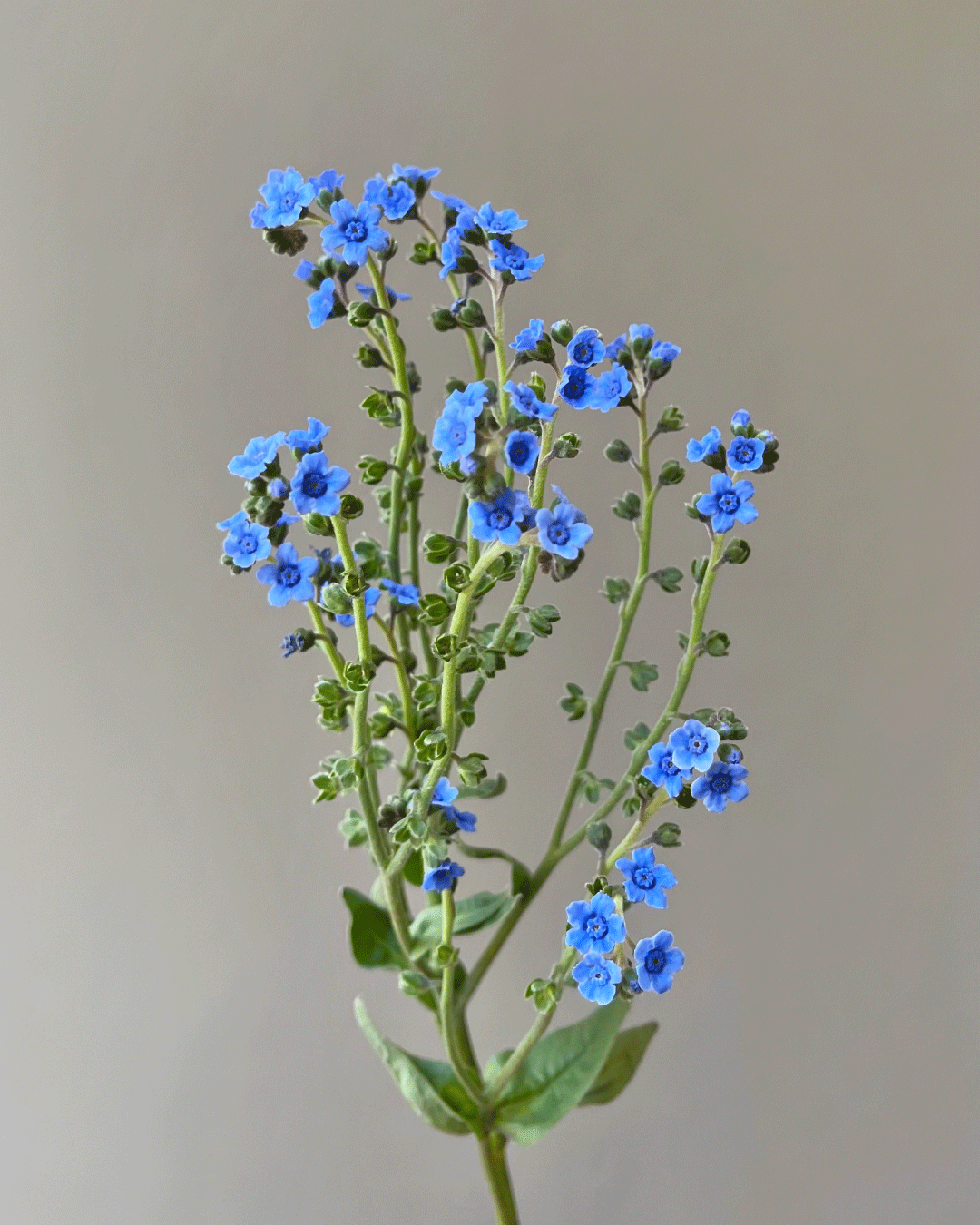June - 5 seasonal flowers
- Martina Bodini

- Aug 1, 2022
- 1 min read
It is the time of the year when the sun heats the ground for several hours a day, the meadows are filled with wild flowers, in our garden the first annual and biennial flowers sown the previous autumn bloom. Yes, it takes patience and planning to grow flowers.
[from top-left]
Cornflower
The wildflower par excellence. It blooms in abundance and self-sows easily, so you can enjoy it from year to year. Often new combinations of colors are created from the crossing pollination of different varieties. Our favorite palette ranges from mauve to blue to match other seasonal blooms.
Forget me not
Another romantic flower. Very small blue buttons that gradually bloom on the stem. Despite its small size, the scenic effect in a bouquet is guaranteed.
Digitalis
Biennial flower, meaning it blooms from the second year after sowing. As with snapdragons, its petals are a favorite hiding place for pollinators that are easy to find asleep lulled by the wind. Some varieties can reach one meter and twenty in height, they are the most suitable for large arrangements, while the smaller stems we keep them for bouquets and jars. The flower is always two-colored.
Speronella
Fresh or dry, a versatile flower that gives height to compositions. We love it in shades of white and lavender, and we are always fascinated by its long shelf life.
Agrostemma
Little known this summer flower has very long stems with white flowers. Unlike many similar flowers that have yellow pistils, these grays go perfectly with all palettes and satisfy even the most discerning brides. Their pot life is not long but for each stem you find 3/4 flowers that open in sequence.








Comments